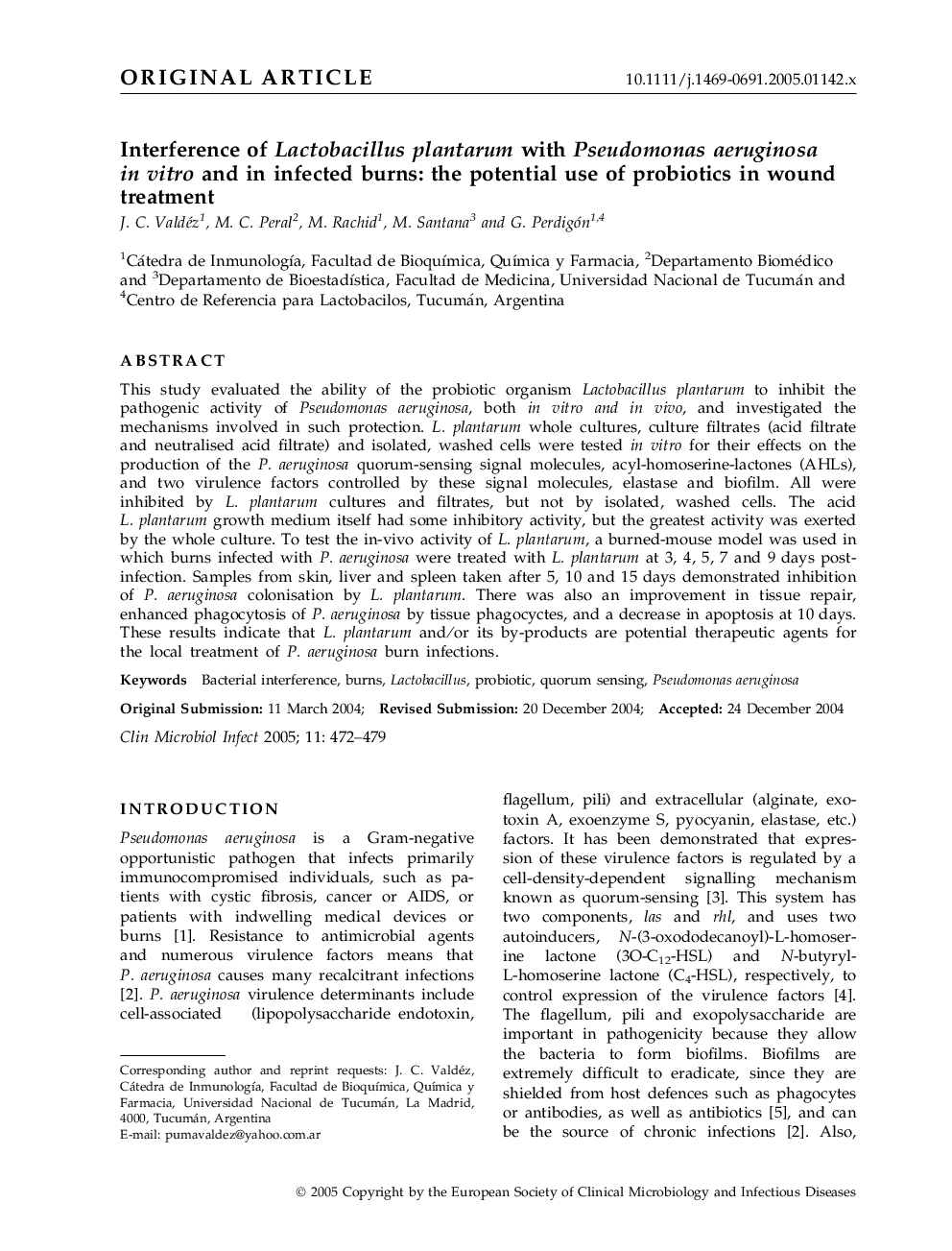| Article ID | Journal | Published Year | Pages | File Type |
|---|---|---|---|---|
| 9276054 | Clinical Microbiology and Infection | 2005 | 8 Pages |
Abstract
This study evaluated the ability of the probiotic organism Lactobacillus plantarum to inhibit the pathogenic activity of Pseudomonas aeruginosa, both in vitro and in vivo, and investigated the mechanisms involved in such protection. L. plantarum whole cultures, culture filtrates (acid filtrate and neutralised acid filtrate) and isolated, washed cells were tested in vitro for their effects on the production of the P. aeruginosa quorum-sensing signal molecules, acyl-homoserine-lactones (AHLs), and two virulence factors controlled by these signal molecules, elastase and biofilm. All were inhibited by L. plantarum cultures and filtrates, but not by isolated, washed cells. The acid L. plantarum growth medium itself had some inhibitory activity, but the greatest activity was exerted by the whole culture. To test the in-vivo activity of L. plantarum, a burned-mouse model was used in which burns infected with P. aeruginosa were treated with L. plantarum at 3, 4, 5, 7 and 9 days post-infection. Samples from skin, liver and spleen taken after 5, 10 and 15 days demonstrated inhibition of P. aeruginosa colonisation by L. plantarum. There was also an improvement in tissue repair, enhanced phagocytosis of P. aeruginosa by tissue phagocyctes, and a decrease in apoptosis at 10 days. These results indicate that L. plantarum and/or its by-products are potential therapeutic agents for the local treatment of P. aeruginosa burn infections.
Related Topics
Life Sciences
Immunology and Microbiology
Microbiology
Authors
J.C. Valdéz, M.C. Peral, M. Rachid, M. Santana, G. Perdigón,
